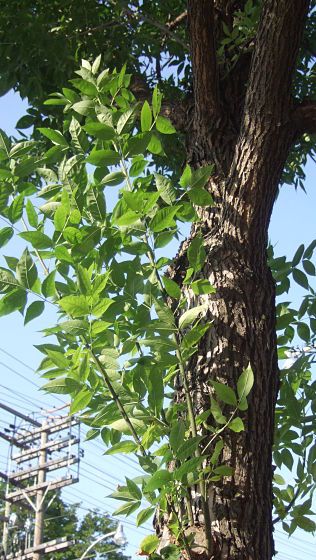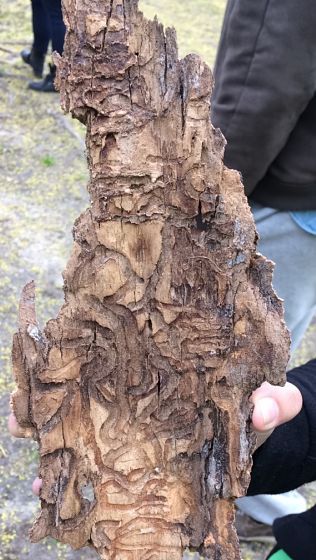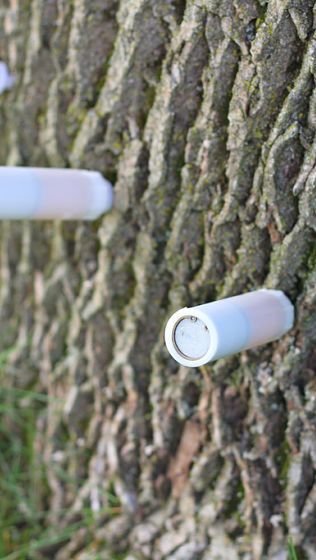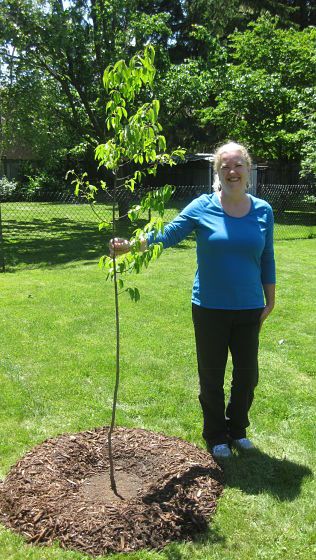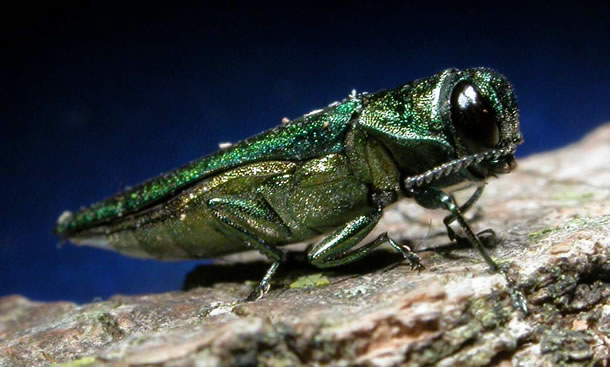
What is the Emerald Ash Borer (EAB)?
The Emerald Ash Borer is an introduced insect pest from Asia that feeds on and kills ash trees. These insects cut off the flow of water and nutrients within the trees by feeding underneath the bark. All species and sizes of ash trees (genus: Fraxinus) are susceptible, except for the mountain ash (Sorbus spp.) which is not a true ash. If a tree has become infested with EAB, mortality will result, usually within 2-3 years.
In North America, the beetle was initially discovered in Michigan and southwest Ontario in 2002, and the first infestations in the City of Toronto were detected in 2007 and in York Region in 2008. It is estimated that the City of Toronto will lose nearly all of its 860,000 ash trees to EAB -- a number which represents canopy cover over both public and private land in the urban forest.
In York Region, it is anticipated that most of the estimated 2,800,000 mature ash trees growing in the area (700,000 of which are found in the urban forest, and 2,100,000 in rural woodlands) will become infested and die within the next ten to fifteen years.

